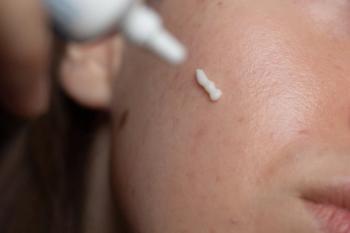
Journal Digest: June 18, 2025
Key Takeaways
- No significant association was found between vitamin D levels and rosacea in the Iranian study.
- At-risk children with atopic dermatitis in Australia had more severe disease and higher healthcare utilization.
This review of the latest dermatologic studies includes insights into differences in vitamin D levels in rosacea versus healthy individuals, psychosocial determinants and atopic dermatitis outcomes, and more.
Journal of Cosmetic Dermatology: A Case–Control Study Examining the Differences in Vitamin D Levels Between Individuals With Rosacea and Healthy Individuals
A case–control study conducted in Iran compared vitamin D levels between 31 patients with rosacea and 31 healthy controls. Although mean vitamin D levels were higher in the rosacea group (29.9 ng/mL) than in controls (24.5 ng/mL), the difference was not statistically significant. Subgroup analysis by gender and rosacea severity also revealed no significant associations. Logistic regression adjusted for age showed no link between vitamin D levels and rosacea, suggesting no meaningful relationship between vitamin D status and the presence or severity of the condition.1
Australasian Journal of Dermatology: Psychosocial Determinants and Atopic Dermatitis Outcomes: A Cross-Sectional Study From an Australian Paediatric Centre
A retrospective cross-sectional study of 908 children with atopic dermatitis (AD) at a pediatric center in Melbourne found that those from at-risk groups—such as rural, culturally diverse, First Nations, socioeconomically disadvantaged, or vulnerable backgrounds—had significantly more severe disease (43.8% vs 28.3%) and greater health care use, including higher hospitalization and medication rates. Multivariate analysis showed these children had over 4 times the odds of severe AD and nearly 3 times the rate of hospitalizations compared to controls.2
JEADV Clinical Practice: Dermoscopic Evaluation of Erythema Versus Post-Inflammatory Hyperpigmentation (PIH) in Skin of Color (SOC) Patients
A clinical report highlighted how erythema may present differently in patients with skin of color, often appearing as brown or purple patches that are easily mistaken for post-inflammatory hyperpigmentation (PIH). Through the use of dermoscopy, clinicians can distinguish erythema from PIH by identifying a positive blanching effect—seen in inflammatory conditions like AD but absent in pigmentary disorders.3
Dermatologic Therapy: Clinical Efficacy and Safety of Upadacitinib Combined With a 308 nm Excimer Laser in the Treatment of Refractory Vitiligo Complicated With Atopic Dermatitis
A recent study in Chinese patients with refractory vitiligo and moderate to severe AD found that combining upadacitinib with 308-nm excimer laser therapy significantly improved outcomes. After 4 months, patients achieved a 55% reduction in Vitiligo Area Scoring Index, with the most notable repigmentation occurring on the face and neck (>70%). The hands and feet were least responsive. Improvements were also seen in AD severity (SCORAD ↓41.89%) and quality of life (DLQI ↓49.12%). No serious adverse events occurred.4
International Journal of Dermatology: Climate Change, Natural Disasters, and Cutaneous Fungal Infections
A retrospective study evaluated the use of VYC-12, a high–molecular weight hyaluronic acid injectable, in 15 adults with facial inflammatory skin conditions or aging-related concerns in Japan. Among 10 patients with treatment-resistant AD, acne vulgaris, or rosacea, VYC-12 significantly reduced skin redness and improved hydration over a 4-month period. All participants reported satisfaction with outcomes, and no adverse events occurred.5
References
- Faghihi G, Mohaghegh F, Shoushtarizadeh M, Poostiyan N, Hosseini SM, Khosravi A. A case–control study examining the differences in vitamin D levels between individuals with rosacea and healthy individuals. J Cosmet Dermatol. Published online June 10, 2025.
doi:10.1111/jocd.70141 - Courtney A, Yazdabadi A, Schembri E, Lowe AJ, Williams C, Su JC. Psychosocial determinants and atopic dermatitis outcomes: A cross-sectional study from an Australian paediatric centre. Australas J Dermatol. Published online June 12, 2025.
doi:10.1111/ajd.14547 - Parraga SP, Mayo TT. Dermoscopic evaluation of erythema versus post-inflammatory hyperpigmentation (PIH) in skin of color (SOC) patients. JEADV Clin Pract. Published online June 10, 2025.
doi:10.1002/jvc2.70080 - Zhou F, Li W, Liu Y, Jin Q, Han W, Li J, Liu X. Clinical efficacy and safety of upadacitinib combined with a 308 nm excimer laser in the treatment of refractory vitiligo complicated with atopic dermatitis. Dermatol Ther. Published online June 16, 2025.
doi:10.1155/dth/9949035 - Gupta AK, Thornbush M, Wang T. Climate change, natural disasters, and cutaneous fungal infections. Int J Dermatol. Published online June 12, 2025.
doi:10.1111/ijd.17908
What new studies have you been involved with or authored? Share with us by emailing
Newsletter
Like what you’re reading? Subscribe to Dermatology Times for weekly updates on therapies, innovations, and real-world practice tips.


















